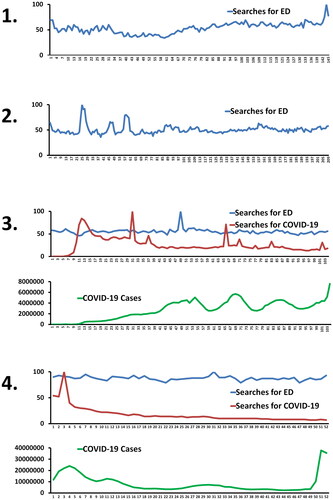Figures & data
Figure 1. Searches for ED and COVID-19 from Google Trends (provided by Google as relative search volumes (RSVs): they are normalized with a minimum value of 0 and a maximum value of 100) and weekly COVID-19 cases from WHO (in absolute numbers) in the four time periods. Please note that in the first time period Google provides search data RSVs monthly, while in the other three periods this is done weekly. Time period 1: January 1, 2004 to December 31, 2016, time period 2: January 1, 2017 to December 31, 2019, time period 3: January 1, 2020 to December 31, 2021, time period 4: January 1, 2022 to December 31, 2022. The four time periods are defined by the dates when Google Trends implemented changes in the calculation of its results.

Data availability statement
The data used in this work can be found at: https://zenodo.org/record/8091678
